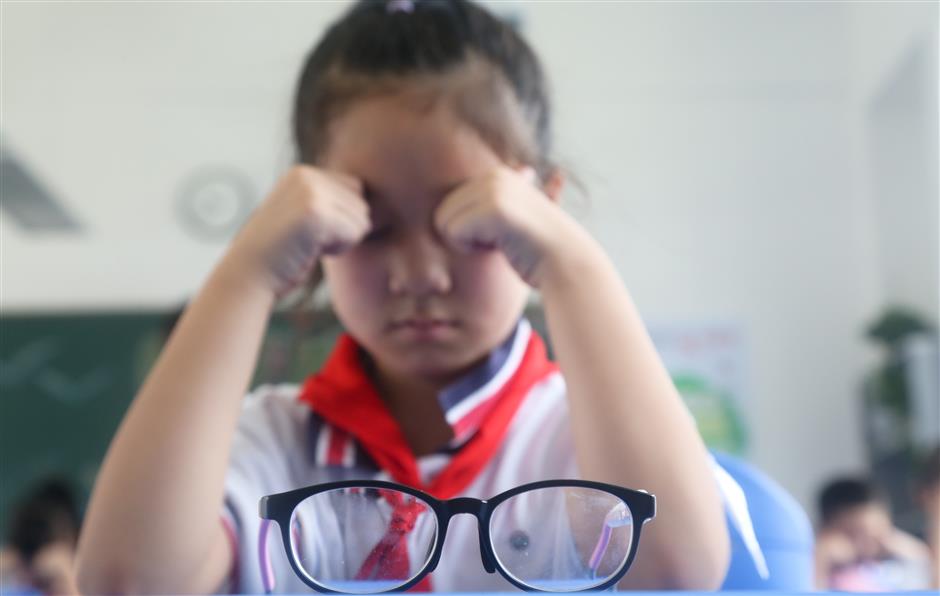Fighting myopia and obesity among students

Parents and schools are being called on to decrease the amount of time students spend in front of computer screens and televisions and increase the amount of time for outdoor activities so as to combat myopia and obesity.
Myopia and obesity are still challenges for Shanghai students.
Authorities made the comment ahead of the coming 30th National Student Nutrition Day, which falls on May 20.
Experts from the local disease prevention and control center said the national rate of students suffering from myopia was 53.6 percent last year, while the percentage in Shanghai was higher, without giving the specific figure.
A survey about myopia-related behaviors conducted last year among students aged between 9 and 24 in Shanghai showed that more than 73 percent spent less than two hours a week on outdoor exercises on average, while 31 percent spent less than one hour a week on outdoor exercises.
Meanwhile, 11.73 percent of the students said they spent more than two hours a day on the computer, while 34 percent watched TV at least one hour every day.
The center also revealed that the obesity rate among local students has been rising.
According to the center, from 2005 to 2018, the percentage has climbed from 11.35 percent to 18.27 percent.
Boys suffer more from obesity than girls.
Middle school students report the highest obesity rate, followed by primary and high school students.
But from 2015 to 2018 the obesity rate in primary school students declined from 18.93 percent to to 17.28 percent.
The center said there are some improper diet behaviors in local primary and secondary school students, such as drinking sugared beverages.
One of its surveys in 2015 found about 74.6 percent of the students drank sugared beverages at least once a week, and 36.5 percent drank them at least four times a week.

Another survey in 2017 found 20.5 percent of local secondary school students ate vegetables less than twice every day, and 43.1 percent ate fresh fruit less than once every day.
About 18.4 percent of the students did not have breakfast every day, 77.7 percent failed to do physical exercises at least 60 minutes a day, and 86.4 percent failed to do moderate physical exercises every day. The lack of physical exercises mainly happened on weekends and in holidays.
Shanghai authorities have been monitoring students’ behaviors that might affect their health, including poor dietary habits, sports and sleep, so as to work out measures to improve their health.
Meanwhile, the education commission in the city has been increasing outdoor exercises in local schools.
Currently, most schools in Shanghai are required to offer three PE classes per week.
Some schools selected into a pilot program are asked to ensure that students have four PE classes a week, among which primary schools are asked to ensure students have another two sport-activity classes per week, while middle school students are to have one such class.
Last year, China’s Ministry of Education and another seven government departments released a plan to control and prevent myopia among adolescent students.
It aims to reduce the myopia rate to around 3 percent in 6-year-old children, under 38 percent in primary school students, under 60 percent in middle school students and under 70 percent in high school students.
To achieve the goal, it calls on both parents and schools to increase outdoor activities and reduce academic burdens and time spent in front of digital screens.















